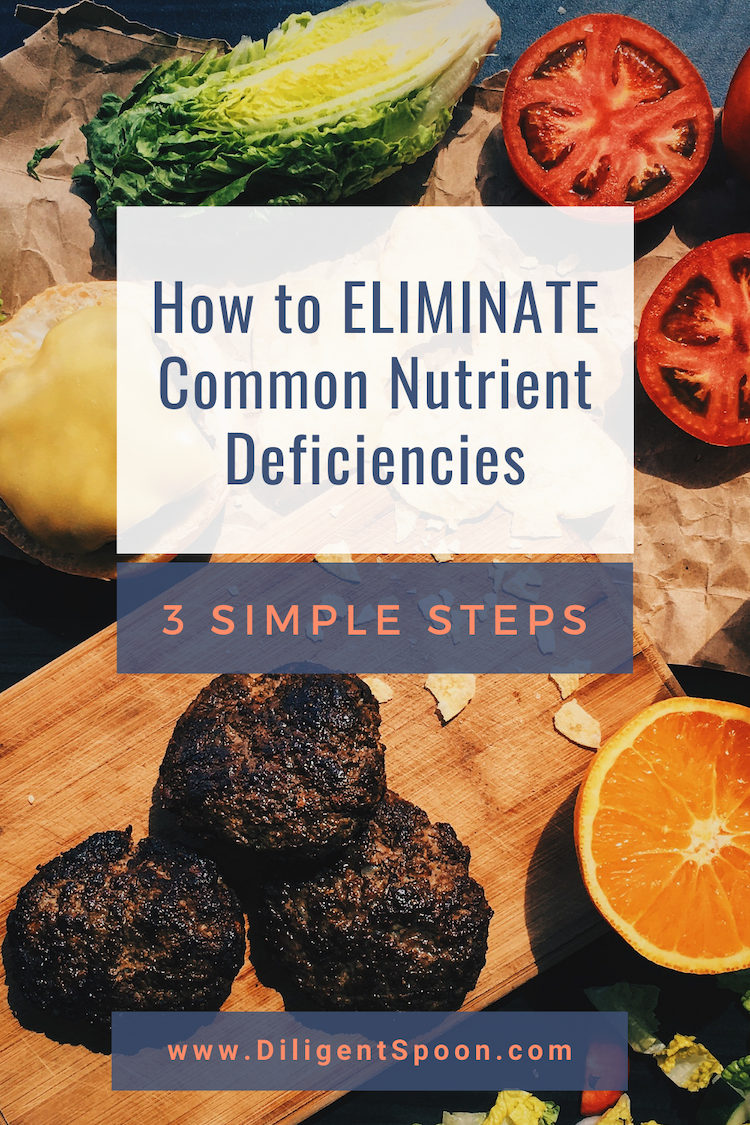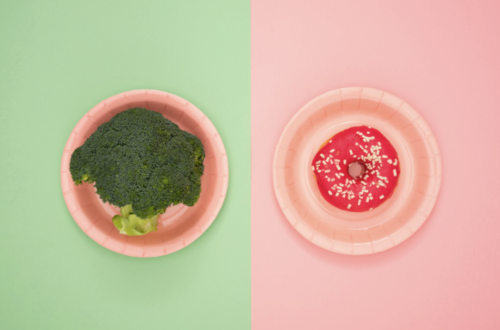
How to Eliminate Common Nutrient Deficiencies
It may seem silly to talk about nutrient deficiencies when many of us are blessed with too many food choices. Just eat a variety of foods, and you’ll be good, right?
Well, despite our best efforts – and sometimes because of them – women’s diets are often low in several micronutrients (vitamins and minerals – I’m going to just say “nutrients”) that are key for health – now and in the long-term. The good news: You can eliminate common nutrient deficiencies with a just a few tweaks to your diet.
So, what are common nutrient deficiencies in women?
Common Nutrient Deficiencies:
Vitamin D, Magnesium, Vitamin B12, Iron
How do you know if you have a deficiency?
- There are many signs and symptoms for most vitamin and mineral deficiencies. Fatigue, weakness, nausea are big ones, but how do you know if you’re low on nutrients, or just had a bad night’s sleep?
- The only way to really know is to get a blood test and go over the results with your health care practitioner. You might want to do this if you have a health condition or take medication that can change your digestion.
- My personal preference is to practice dietary insurance – eat nutrient-dense foods and take a couple supplements.
Let’s quickly go through each one of these – why each one is important, signs of deficiency, and how to set things right. By the end of this post, you’ll know exactly how to prevent or eliminate these nutrient deficiencies! ⚡️ 💪
You’ll notice I added the amount of each micronutrient (“nutriet” for the rest of the post) in certain foods. Don’t overthink the numbers. They are there to give you sense of which foods are rich in each nutrient.
Vitamin D
Around 97% of American women are not getting enough Vitamin D. Yep, that’s almost all of us! The Recommended Daily Allowance for adult women 13 – 70 years old is 15 mcg (also listed as 600 IU, or International Units).
We need Vitamin D to build and strengthen bones. Vitamin D is especially important for building, and then maintaining bone density in women. As we age, we will lose bone density steadily, but good nutrition, including adequate Vitamin D, will help preserve our bones.
There is evidence that Vitamin D also plays a preventative role in depression and supports the immune system.
Risks of Vitamin D Deficiency
- Poor bone health, bone loss, fractures, osteoporosis
- Fatigue, dismal mood, seasonal affective disorder (double whammy in the winter!)
- Autoimmune disorders like Multiple Sclerosis (MS), type 2 diabetes
Eliminate Vitamin D Deficiency
Here’s a list of the best sources of Vitamin D, with recommendations in BOLD:
- Sunlight: 5–30 minutes of sun exposure, particularly between 10 a.m. and 4 p.m., either daily or at least twice a week to the face, arms, hands, and legs without sunscreen. Vitamin D availability depends on time of day, cloud cover, and skin tone. Lighter skin absorbs more Vitamin D than dark skin.
- Cod liver oil, 1 Tbsp (34 mcg, 226%) 😝 -> fish burps
- Trout and Sockeye salmon, 3 oz cooked (14 – 16 mcg, ~100%)
- Fortified dairy and non-dairy alternative products (2.5 – 3.8 mcg, 15-25%)
- Vitamin D3 supplement (25 mcg, 167%)

Magnesium
Magnesium is a mineral that plays a key role in a ton of bodily processes – everything from regulating muscle function to making very important things like protein, bone, and DNA. When we don’t get enough magnesium our kidneys help us out for a while by retaining the mineral in our bodies.
50 – 75% of Americans don’t consume enough magnesium. The biggest issue with low magnesium intake is that vitamin D cannot be properly used without it. So, a magnesium deficiency = vitamin D deficiency. It’s a two-for-one.
People with increased risk of magnesium deficiency are those with digestive diseases, type 2 diabetes, alcohol dependence, and those who are over 70 years old.
The Recommended Daily Allowance for adult women 14 – 70 years old is 310 – 400 milligrams (mg), depending on age, pregnancy, and lactation.
Signs of Magnesium Deficiency
- Early signs include loss of appetite, nausea, fatigue, muscle weakness.
- Long-term deficiency can lead to numbness, tingling, muscle cramps, problems with heart rhythm.
Eliminate Magnesium Deficiency
Excellent sources of Magnesium (amount in mg, % of 320-mg RDA):
- Roasted pumpkin seeds, 1 oz (156 mg, 49%)
- Cooked spinach, 1 cup (156 mg, 49%)
- Roasted almonds, cashews, 1 oz (75 mg, 23%)
- Magnesium citrate supplement (325 mg, 100%)
Magnesium is in a wide variety of foods – too many to list! Follow this link for a more comprehensive list.
Vitamin B12
B12 is necessary for healthy blood cells and nerve function. It also plays a key role in making DNA and prevents certain types of anemia.
B12 is unique because it occurs naturally in animal-based foods (but not plants). These include fish, meat, poultry, eggs, and dairy products.
The RDA for women (age 14 and over) is 2.4 mcg, 2.6 mcg if pregnant, 2.8 mcg if breastfeeding.
Signs of Vitamin B12 Deficiency
- Tiredness, weakness, constipation, loss of appetite, weight loss, anemia
- Neurological signs of B12 deficiency include poor balance, depression, confusion, dementia, memory loss.
Eliminate Vitamin B12 Deficiency
The problem with vitamin B12 deficiency is that people, especially women, are more often vegan, vegetarian, or otherwise restrict food groups that are high in B12. These dietary habits create a diet that is low in B12 (and other nutrients). Read more about veganism in this post.
- If you eat a variety of meat, fish, and dairy foods, you will not be deficient in B12.
- Vegans and vegetarians are wise to supplement their diets with B12-fortified nutritional yeast, other foods with B12 added to them or a B12 supplement.


Iron
Iron is a mineral that your body needs to make two key proteins: hemoglobin (a protein in red blood cells) and myoglobin (protein that carries oxygen to muscles).
The RDA for iron is 18 mg for women of childbearing age (18 – 50 years), with the requirement dropping to 8 mg after age 50.
Pregnant and lactating women need more – 27 mg/day – regardless of their age.
Iron Deficiency
- Signs of iron-deficiency anemia: fatigue, shortness of breath, brittle hair and nails, pale skin, cold extremities.
- Iron deficiency during pregnancy is associated with premature birth and low birth weight.
Eliminate Iron Deficiency
Don’t worry, we don’t have to eat plates of beef liver to get enough iron! (Although it’s a pretty great source.)
As a side note, I do not take an iron supplement for three reasons:
- If I eat a variety of foods, including meats, fatty fish, greens, etc., I know I’m getting enough.
- Iron from supplements is generally poorly absorbed.
- Iron supplements have been known to cause constipation. No thank you.
Heme iron (from animals) is better absorbed than non-heme iron (from plants and most supplements). So, I’m only listing heme iron food sources. You can see a list of both heme and non-heme iron-rich foods here.
Here are good sources of iron (amount in mg, % of 18 mg RDA):
- Oysters, clams, mussels, 3 oz cooked (up to 8 mcg, 44%)
- Sardines, Atlantic, canned in oil, drained solids with bone, 3 ounces (2 mcg, 11%)
- Beef and chicken liver, other organ meats, 3 oz cooked (up to 5 mg, 28%)
- Ground beef, 3.5 oz cooked (2.7 mg, 15%)
- Chocolate, dark, 85% cacao solids, 2 ounces (4 mg, 22%). Not an animal product, but I had to recognize dark chocolate here! 🍫
Eliminate Nutrient Deficiencies – Get Enough Vitamin D, Magnesium, Vitamin B12, & Iron
Ok, here are three things you can do to eliminate these four deficiencies:
- Eat meat and fish often. They are excellent sources of magnesium, B12, and iron.
- Eat leafy greens daily (spinach, arugula, kale, chard, collard greens). They are excellent sources of magnesium and non-heme iron.
- Consider vitamin D3 supplements. They are inexpensive and safe.
Honorable mention: If you want a natural sleep aid, digestive aid, or are an athlete, think about a magnesium supplement.
Here are some example meals that are full of these and lots of other nutrients!
References
Micronutrient Inadequacies in the US Population: an Overview
National Institutes of Health: Vitamin D
National Institutes of Health: Magnesium
Iron, Folate, and Other Essential Vitamins You’re Not Getting Enough of (and Really Should)
National Institutes of Health: Iron
National Institutes of Health: B12









One Comment
Pingback: